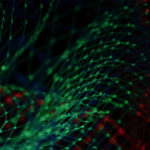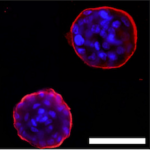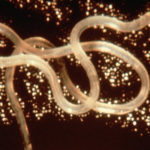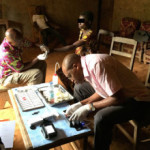The Chan Zuckerberg Biohub Investigator Program recently awarded $21 million to 21 University of California, Berkeley researchers. Of this group, four are faculty scientists in the Biosciences Area.
Nitric Oxide Is the Key for Building Breast Tissue from Single Cells in 3-Dimensions
Building on four decades of research, Mina Bissell, Distinguished Scientist in Biological Systems and Engineering (BSE) Division and her colleagues have demonstrated a dynamic reciprocity between the extracellular matrix (ECM) and cell nucleus for tissue-specific gene expression. Using the 3D ECM gel to study signaling from outside the cell to the nucleus they have unraveled a dozen different pathways critical for the formation of phenotypically normal breast tissue. The signaling between the ECM and the nucleus is pivotal, bidirectional, and intricate. In two papers published in eLife this week, Bissell and Dan Fletcher, BSE faculty scientist and Purnendu Chatterjee Professor and Chair of Bioengineering at UC Berkeley, shed new light on how the extracellular matrix communicates with breast cells to generate nitric oxide, forming a loop that influences the pathway a single cell takes to form breast tissue.
A Smartphone-based Microscope for Treating River Blindness
LoaScope, the latest iteration of the CellScope technology developed in the lab of Daniel Fletcher, turns the camera of a mobile device into a microscope and automatically detects and quantifies infection by parasitic worms in a drop of blood. One such parasite, Onchocerca volvulus, is endemic to Africa and can lead to blindness in infected individuals. Treatment with the drug ivermectin is complicated because co-infection by another parasitic worm, the Loa loa, can cause fatal side effects. Expanding on a successful pilot study, the LoaScope was used to analyze the blood of patients in Cameroon, enabling doctors to treat more than 15,000 people with ivermectin without serious complications. Fletcher, a faculty scientist in Biological Systems and Engineering (BSE) and chair of the UC Berkeley Department of Bioengineering, is a coauthor on the report published in the New England Journal of Medicine. Read more from UC Berkeley News.
Smartphone video microscope automates detection of parasites in blood
A smartphone microscope, CellScope Loa, uses video to automatically detect and quantify infection by parasitic worms in a drop of blood. Daniel Fletcher, faculty engineer in the Biological Systems & Engineering Division, led the team of researchers who developed this next generation of UC Berkeley’s CellScope technology, which could be important for reviving efforts to eradicate debilitating filarial diseases in Africa, such as onchocerciasis (river blindness).
Was this page useful?







